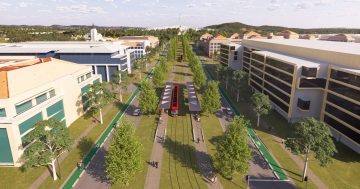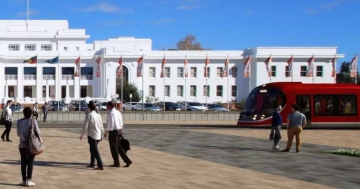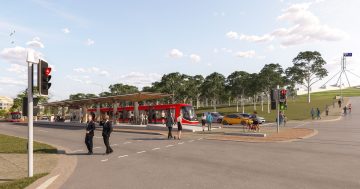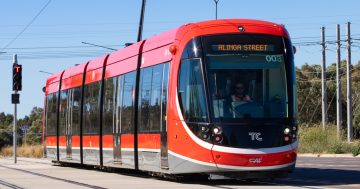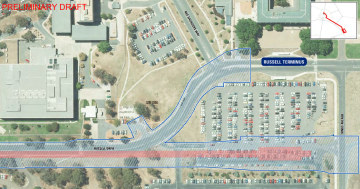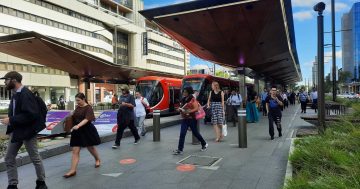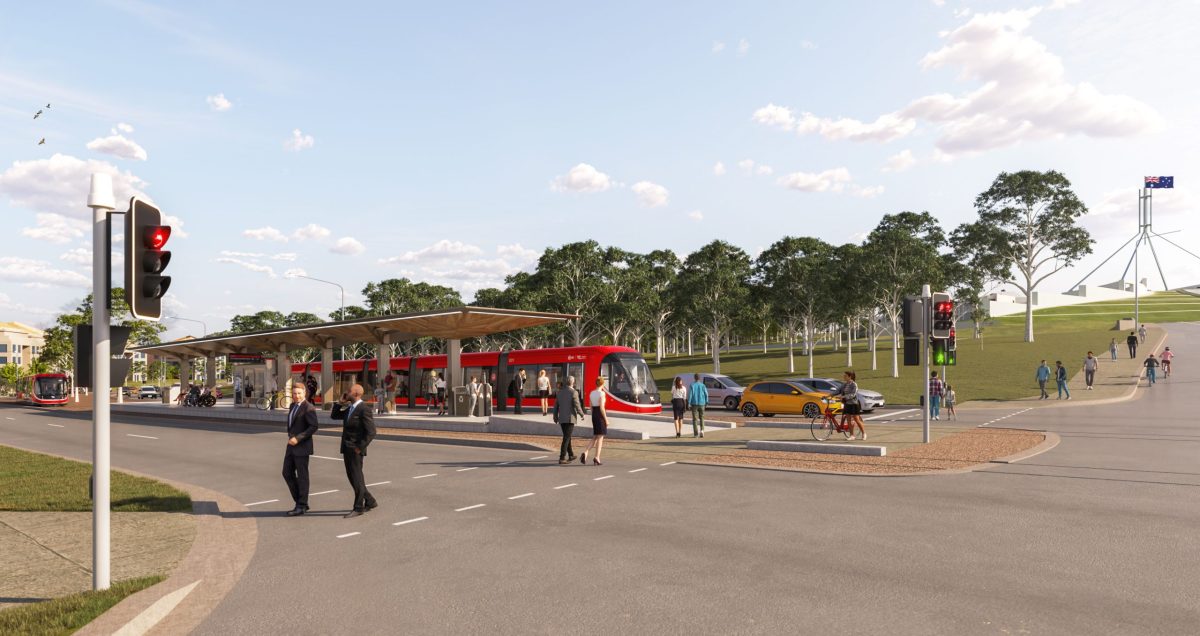
An artist’s impression of a light rail stop at Kings Avenue on the preferred State Circle route. Is it close enough to the institutions? Images: ACT Government.
Chief Minister Andrew Barr has flagged the possibility of another light rail stop on Commonwealth Avenue as part of the proposed line to Woden.
Mr Barr said another stop on the preferred State Circle alignment could be near the Hyatt Hotel to service the National Cultural Institutions, as well as the Commonwealth departments located nearby.
At present, the next stop on the Stage 2B route after Commonwealth Park is sited at the intersection with Kings Avenue, adequate for public servants at Parliament House and in Barton, but it might be a stretch for those working in Parkes or tourists heading to the institutions.
Mr Barr said his prime focus was on the best locations for stops from the point of view of coverage and walking distance on either of the two alignments being considered.
“How much of the workforce, and I guess tourist-desired locations will those stops serve?”
Mr Barr said the National Gallery, the Portrait Gallery and the High Court were the furthest from the Kings Avenue stop.
“Could there then be one on Commonwealth Avenue that is somewhat proximate to the Hyatt? That’s a question that needs to be considered,” he said.
“But then, of course, the more stops, the more journey time.”
Mr Barr defended the government’s decision to resurrect the Barton dog leg as an option, saying it was better to have done the work on an alternative route if the preferred one fell over.
“I think we need to just keep options open in case the preferred alignment is not possible from an engineering perspective, rather than go through this process, find that there are either heritage or other constraints that don’t allow that and then have to go back and go through the whole thing again.”
Mr Barr said it was a case of derisking the project, possibly saving years under a worst-case scenario.
He rejected claims that the decision had injected unwanted uncertainty into the project.
“It shows a degree of due diligence when I absolutely know what would happen if the EPBC process came back with, ‘Oh, sorry, you can’t do that'”, he said.
“Then there’d be a massive pile-on about why didn’t you consider alternatives.”
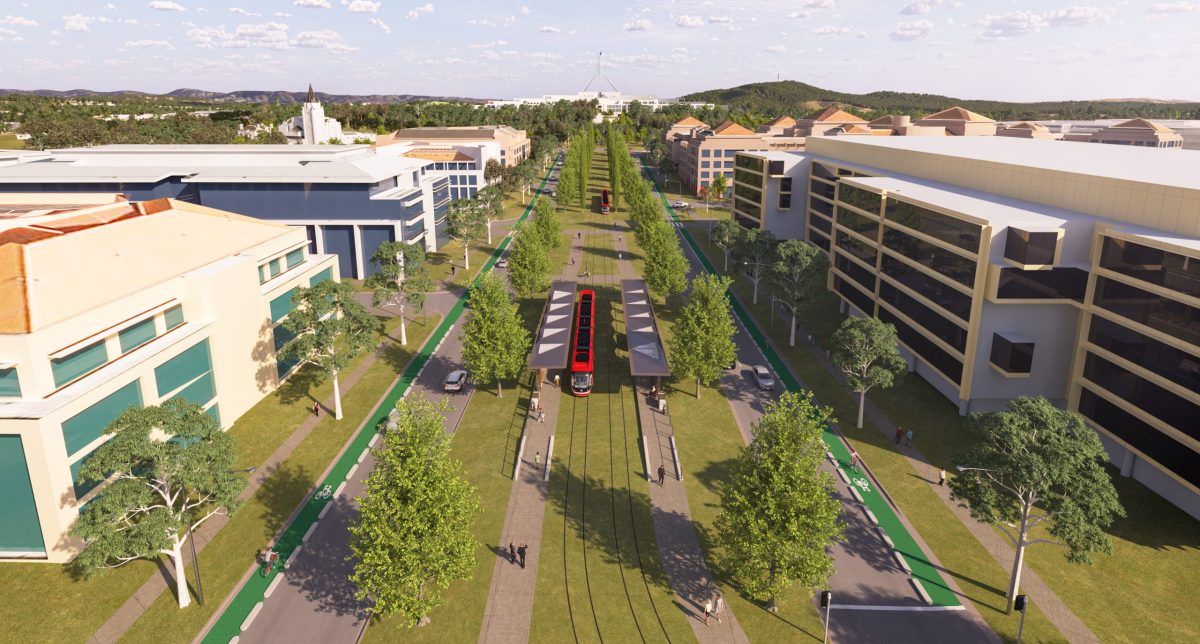
Light rail in Sydney Avenue on the so-called Barton dog leg route. It’s difficult to compare routes, says Andrew Barr.
Mr Barr said the Barton route would not necessarily be cheaper, take longer to build or have a much longer journey time as there were many factors to consider, including the number of stops, the cost of overcoming engineering hurdles, the gradient and the speed at which a light rail vehicle can travel.
“If you just wanted the fastest point-to-point, then you would have no stops between Civic and Woden,” he said.
But that would mean many people would not be able to use it.
Mr Barr also lamented that many people were talking about light rail as if Canberra would be frozen in time.
“How is the road network going to be performing in 2045 because it’s not just travel time now,” he said.
“That Civic road and bus journey will grow in length in terms of time every year, as more traffic is on that corridor. It will continue to extend, and then obviously there will be more people that we will need to move, and that would necessitate more buses if buses were the only public transport on that corridor.
“In 2024, we need to think about 10, 20, 30, 40, 50 years because this is infrastructure that’s going to be there for a century or more.”
The Canberra Liberals will scrap light rail after Stage 2A is completed if they win power in October but have not yet released its public transport policy.
But alternatives aired have included trackless trams, which Mr Barr said would still need dedicated corridors and a bridge crossing.
“And if they’re not in their own dedicated lane with no other traffic, they offer no more benefits than a long bus,” he said.












